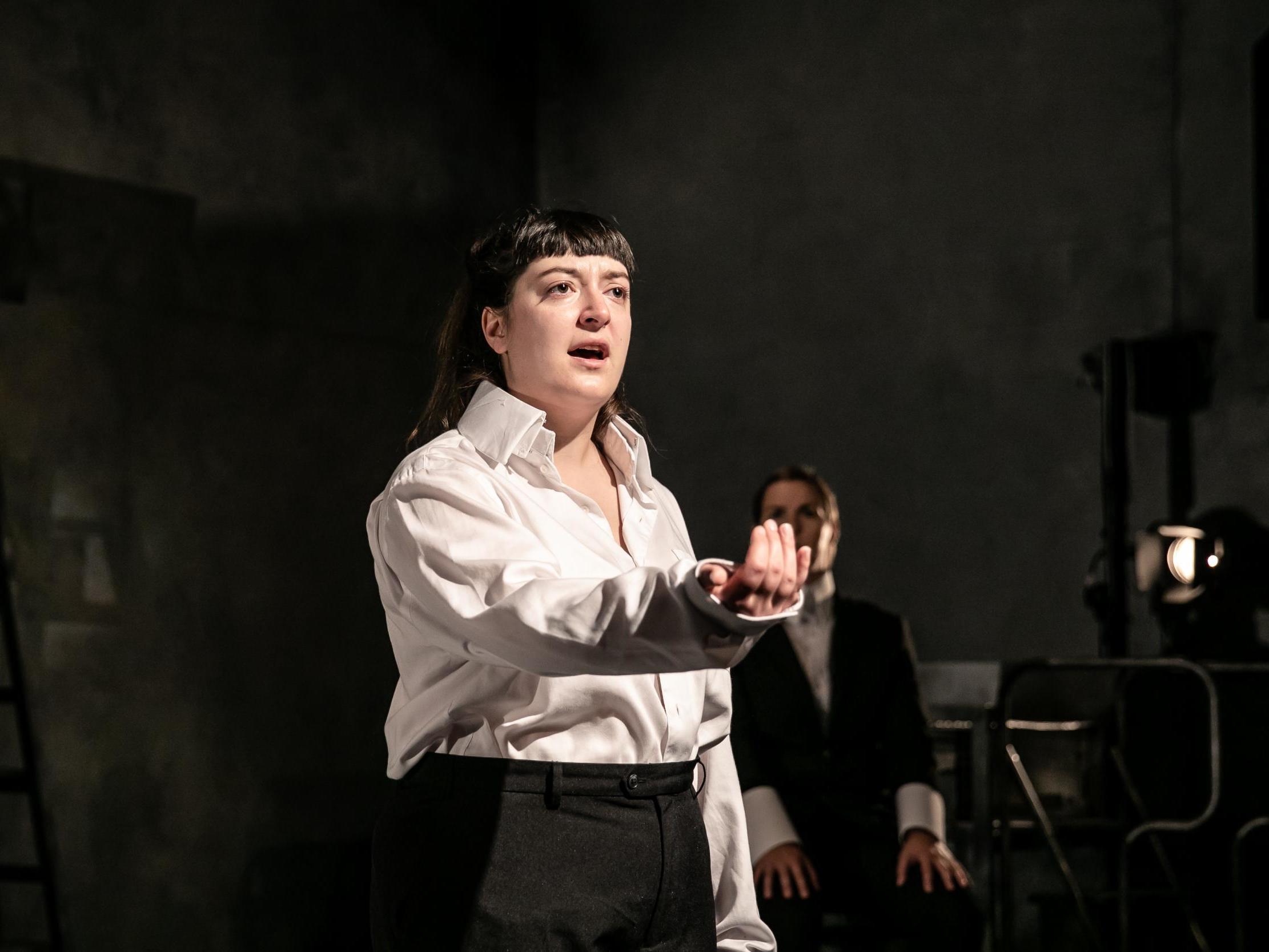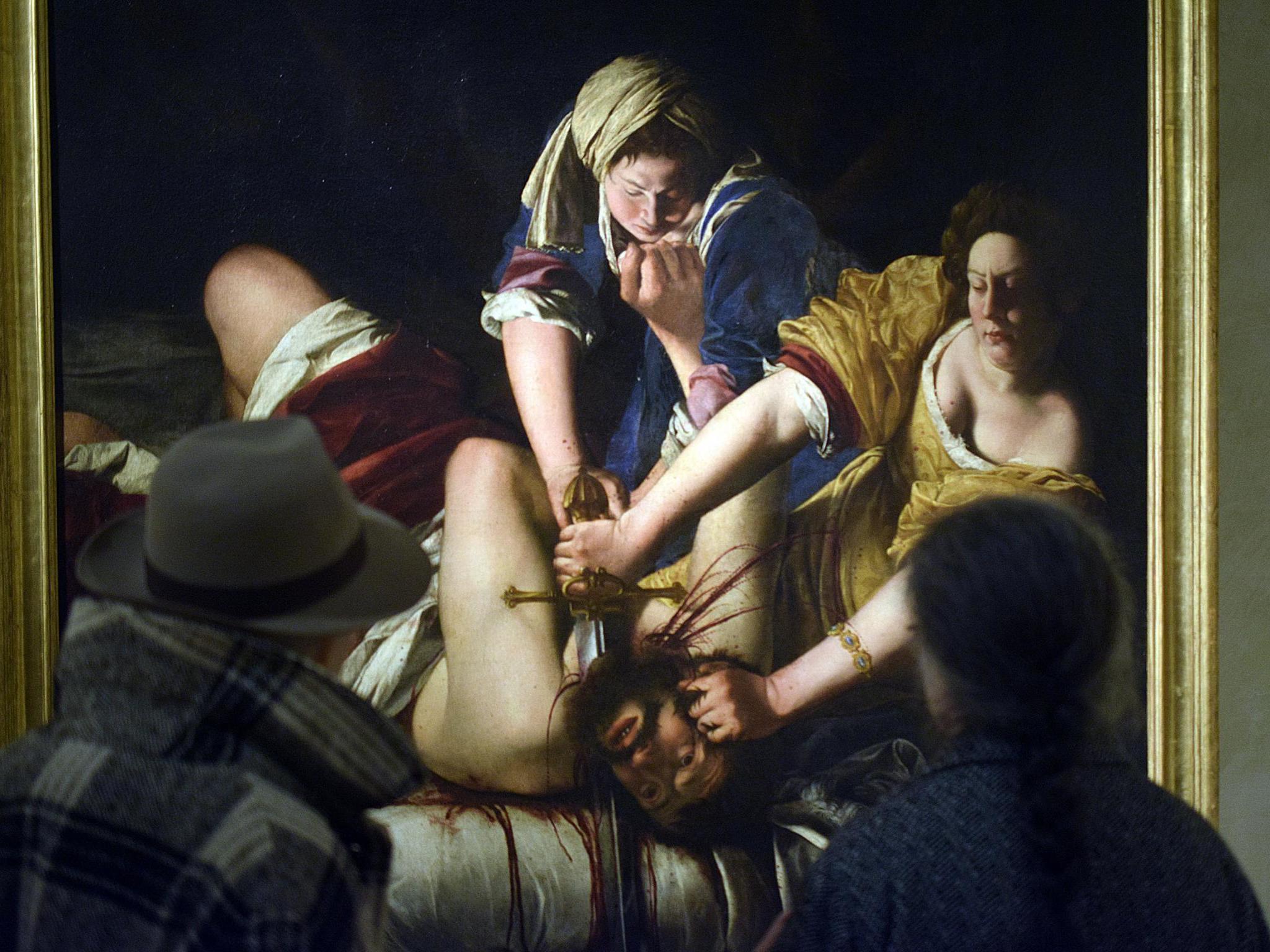It’s True, It’s True, It’s True: All-female play based on rape trial of Artemisia Gentileschi strikes uncanny chord a year on from #MeToo
The remarkable life of the 17th-century painter has inspired this award-winning production

Your support helps us to tell the story
From reproductive rights to climate change to Big Tech, The Independent is on the ground when the story is developing. Whether it's investigating the financials of Elon Musk's pro-Trump PAC or producing our latest documentary, 'The A Word', which shines a light on the American women fighting for reproductive rights, we know how important it is to parse out the facts from the messaging.
At such a critical moment in US history, we need reporters on the ground. Your donation allows us to keep sending journalists to speak to both sides of the story.
The Independent is trusted by Americans across the entire political spectrum. And unlike many other quality news outlets, we choose not to lock Americans out of our reporting and analysis with paywalls. We believe quality journalism should be available to everyone, paid for by those who can afford it.
Your support makes all the difference.The work of 17th-century painter Artemisia Gentileschi is so striking that, for centuries, it was falsely attributed to the artist’s father, Orazio. Few in the male-dominated art world were willing to believe that it could be the work of a woman’s hand.
Indeed, because she was living at a time when women were rarely accepted behind the canvas, Gentileschi’s name was largely lost from history, erased from the art historical canon, despite the success she reaped during her lifetime. But in the past few years, her work has been receiving renewed interest, most recently due to the #MeToo movement.
Gentileschi worked contemporaneously to Caravaggio, whose use of dramatic chiaroscuro brought biblical depictions to life and made him an icon of the baroque era. His work continues to adorn the walls of galleries and museums worldwide today. The young painter presented a similar style to his, but one altogether more personal. It has widely been interpreted as her way of reflecting the struggle of existing as a woman in patriarchal Renaissance Rome.
Her remarkable life story is the inspiration behind a new play from Breach Theatre writers Ellice Stevens and Billy Barrett, It’s True, It’s True, It’s True. Showing to rapturous praise at this year’s Edinburgh Festival and winning a Fringe First and The Stage Edinburgh Award, it has now come to London’s Diorama Theatre with a three-hander cast of Stevens, Kathryn Bond and Harriet Webb.
Although Stevens and Barrett first had their interests piqued by Gentileschi while visiting the National Gallery’s 2016 Beyond Caravaggio retrospective, which predated the global feminist call-to-arms that followed the Weinstein accusations, it’s impossible to view this play through anything other than a post-#MeToo lens. “For us, that moment wasn’t the reason we made the show, but I think it’s the reason we were able to make the show,” says Barrett. “But we wanted to avoid directly referencing anything. All we could do was just tell one woman’s story and know that people will pick up on the parallels.”
Wanting to nurture his daughter’s talent, Gentileschi’s father invited his friend – the celebrated artist-to-the-pope Agostino Tassi – into their home to teach her the art of perspective. But behind closed doors, Tassi violated Orazio’s trust, harassing, taunting and eventually raping the 18-year-old Gentlieschi. In a move unprecedented for the time, the teenager and her father pressed charges against Tassi, taking him to court to boldly recount her story over the course of a seven-month trial which was widely publicised. A celebrity hearing of the era.
It’s True takes the 1612 trial as its basis, revisiting the existing 300-page court transcripts and dramatising Gentileschi’s empowering and harrowing testimony that saw her undergo physical torture and be cross-examined by her attacker. For the most part, It’s True stays as close to the transcripts as possible (which were translated in the 1970s from the original Italian and Latin), veering from them occasionally only to imagine past interactions between victim and perpetrator.
The three actors interchange roles, each chopping and changing from scene to scene through the central characters of Tassi, the judge, Gentileschi and her withering friend Tutzia.
It the cross-examination that is most jaw-dropping. The judge’s questioning – verbatim – includes horrors like “Would you say this intercourse became consensual, pleasurable even?” and “Were you in love with Signor Tassi?”
When asked to substantiate her claims while wearing thumb screws, Gentileschi retorts, “I’m not the one that’s on trial,” to which the judge replies, “We appreciate that Artemisia, but we can’t risk Signor Tassi’s hands – he’s a painter.”
“I’m a painter,” she replies. When questioned by Tassi, she is forced to look him in the eye and respond to the questions: “What protest did you make? Why didn’t you make any noise?”
“Because he held my mouth, I couldn’t cry out,” she recalls, for the second time. “I scratched his face, and pulled his hair… this didn’t bother him at all, and he continued to do his business, which kept him on top of me for a while.”

While we’ve thankfully moved past courtroom torture and defendant questioning, the cross-examination and external influence bring to mind famous trials from recent years – the Ulster rugby rape trial, for example. The resemblance to Trump’s reaction to Dr Christine Blasey Ford’s testimony, meanwhile, is chillingly uncanny.
Making it a female-only stage was an important way to capture moments like these in a safe space, Stevens explains.
“We’ve made this show for women,” she says. “The people we hear talking about these topics are often the people we don’t need to be hearing from, and the language they use makes my skin crawl. This play is women giving space and credence to this conversation about sexual assault.”
But, she continues, it’s not all about that. “There’s a moment where [Tassi’s friend] Cosimo threatens to tell everyone in Rome that she’d slept with him even if she wouldn’t. This isn’t assault but it’s something that happens to women, too. It happened to me when I was 14. That’s what’s at the heart of this show, just showing what it can be like to be a woman.”
The play isn’t all darkness, though. Tassi is a laughably revolting letch, and historic views of female sexuality become in-jokes with the audience. In one scene, several witnesses detail rumours of Gentileschi’s alleged sexual history. While they speak, all three actors take it in turn to mime lewd sexual acts as all-female punk band The Slits’s “I Heard It Through The Grapevine” plays loudly over top. The humour, Barrett says, was a vital ray of light. “Comedians often make rape jokes as a horrible punchline, and there’s something powerful about just women being on the stage finding comedy in it but as a way to respond to trauma, not as the punchline.”
“No, it’s never the punchline,” adds Stevens. “We’ve cried as much as we’ve laughed making the play.”
It’s impossible to view Gentileschi’s spirited paintings without seeing the undercurrent of rage she felt prior to and following the trial. Her pain cuts through every brushstroke. It’s True, It’s True, It’s True focuses on the painter’s two most famous Old Testament works: Susanna and the Elders (1610) and Judith Slaying Holofernes (1614). The central characters don biblical costume and play out the parables live on stage, eventually holding the same positions as the paintings. Seeing Stevens step into the roles of these painterly protagonists brings her experiences – and canvases – to life.

After describing her memory of the attack, Stevens, tears streaming down her face and naked except for a cloth clutched over her breasts, looks every member of the audience in the eyes and repeats the phrase: “It is true” – a moment, she says, that is particularly poignant to act. “I can see then how many people in the audience are reacting to those words. It’s such a generous look from the women, who give you a token of love to help you through it. People have come up to me afterwards and say they wanted to grab me and take me away from it all.”
Ultimately, Tassi was convicted of Gentileschi’s rape, but he never served his sentence of prison and exile, leaving Rome for just four days before returning to the warm embrace of the establishment. Gentileschi went on to paint Judith Slaying Holofernes several more times, and she became the first ever woman to join the illustrious Accademia delle Arti del Disegno in Florence, eventually commissioned by numerous high-profile patrons including Charles I.
Dishearteningly relevant, It’s True is a courtroom drama laced with female ire that tells an all-too-familiar story. It’s no wonder Gentileschi’s work is seeing a revival on social media. What cuts through the raw emotion of this play is the question of what has really changed for women in 400 years.
It’s True, It’s True, It’s True is on at London’s Diorama Theatre until 10 November. Buy tickets here.
Join our commenting forum
Join thought-provoking conversations, follow other Independent readers and see their replies
Comments